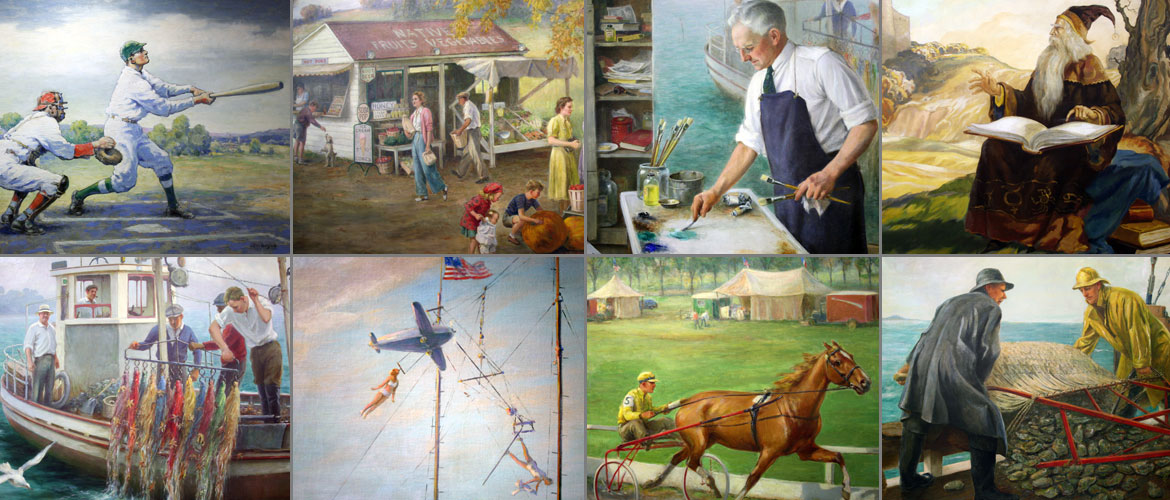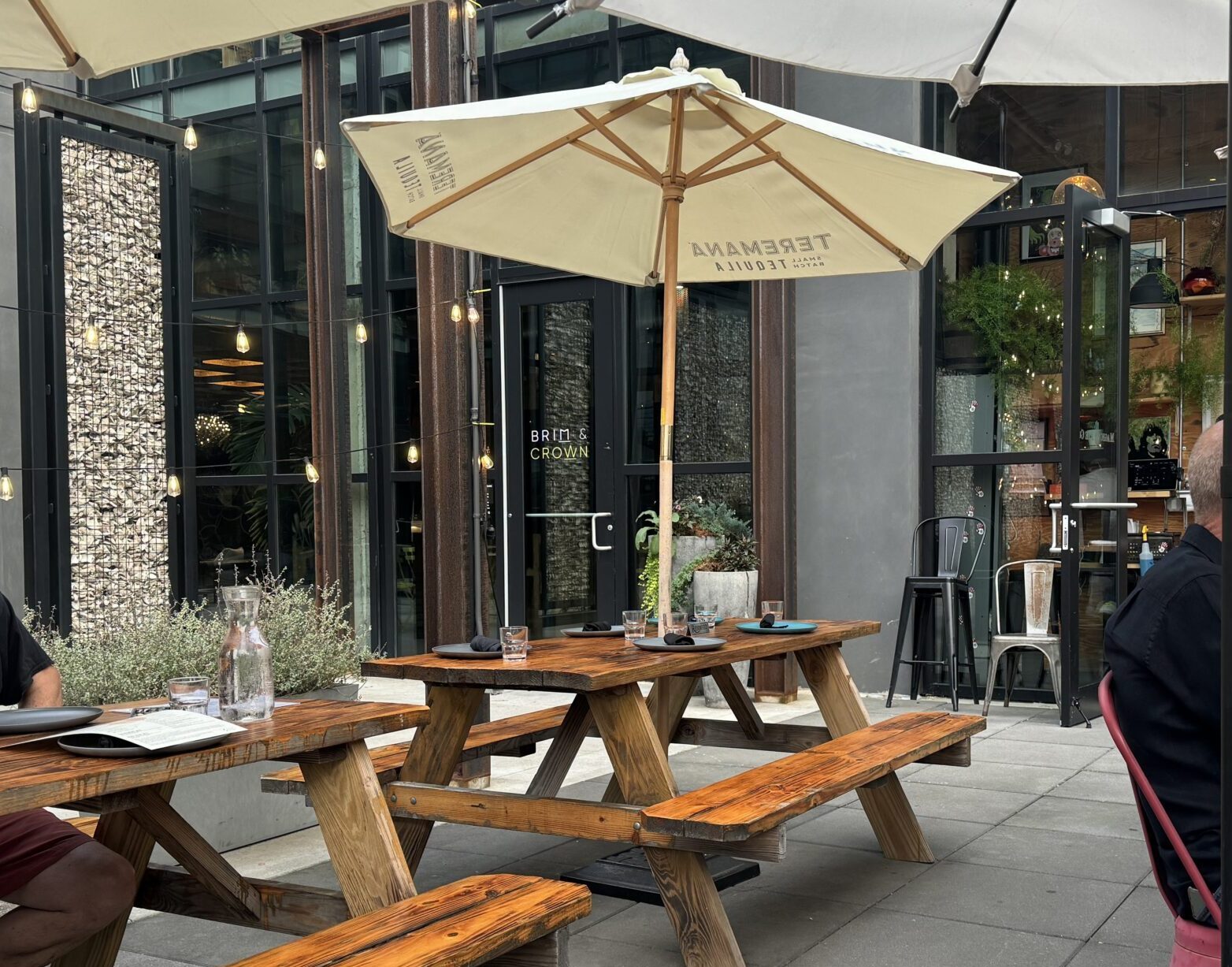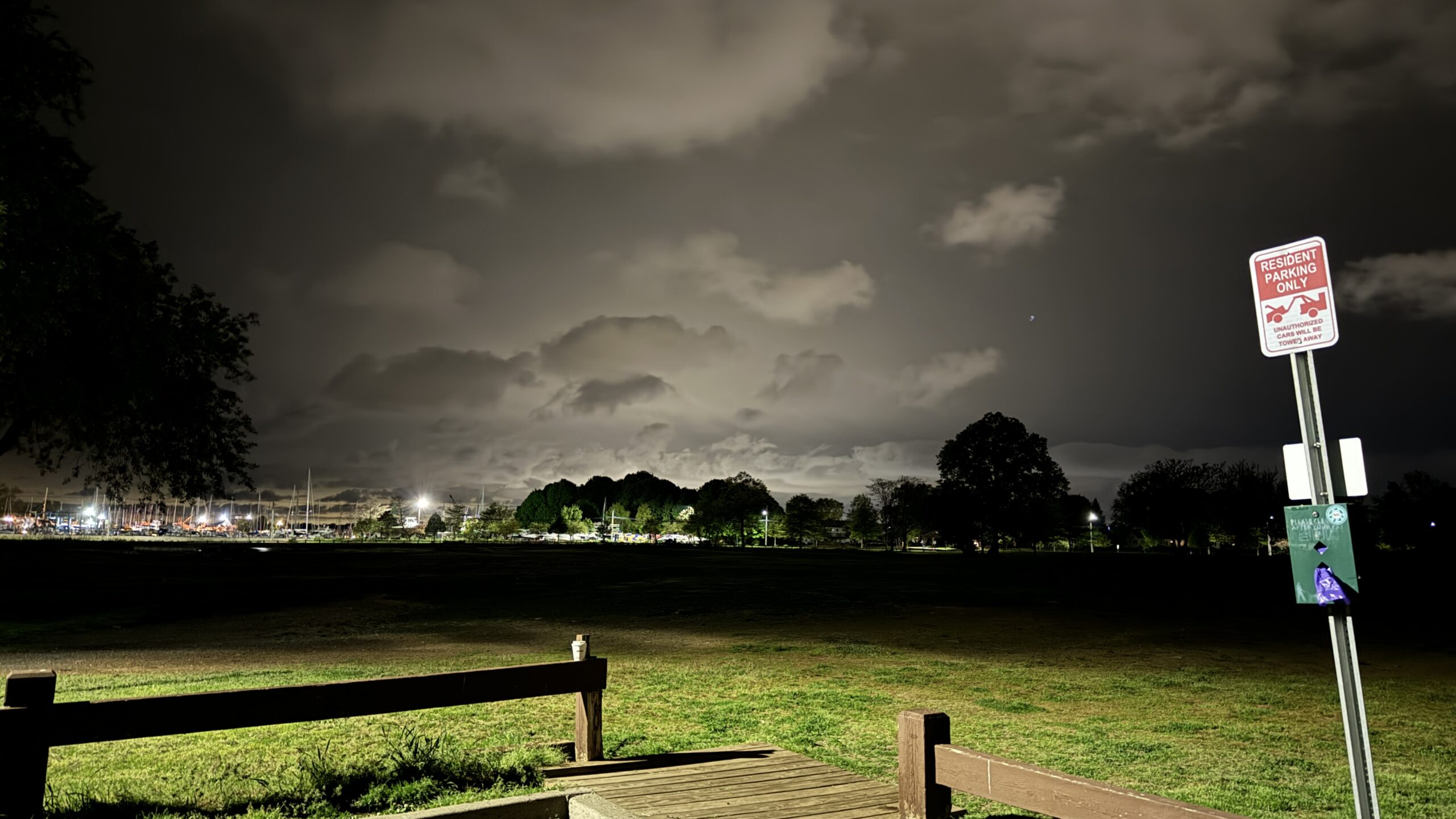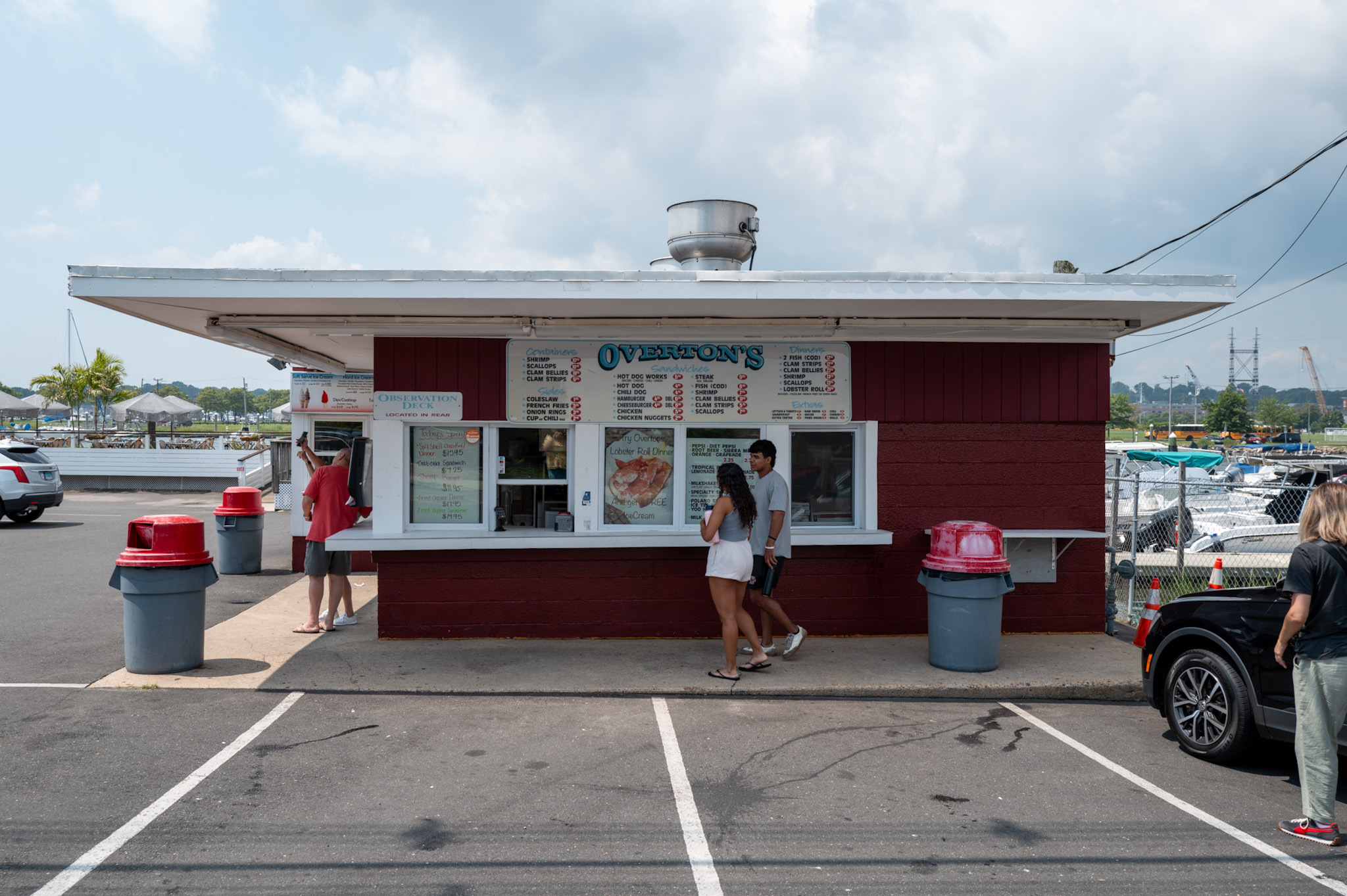This can be considered the largest collection of WPA murals in the country in one location. The actual collection of Norwalk’s WPA murals is more extensive and in many locations. Let’s get into it.
Discover the Historic Collection of Depression-Era Art in Norwalk City Hall
Welcome to Norwalk City Hall, home to one of the largest collections of Depression-era artwork in the United States. In the atrium and surrounding halls, you’ll find 26 meticulously restored canvases (as of 1992), showcasing Norwalk’s rich cultural and historical heritage. These pieces offer a vibrant glimpse into the industries, recreation, and landmarks that defined Norwalk life in the late 1930s and early 1940s.

A Vibrant Contrast to the Times
Created during one of America’s most challenging eras, these murals defy the bleakness of the Great Depression. Instead, they are bright, colorful, and filled with scenes of sunshine, local fairs, and bustling fruit stands. The artists captured an idealized version of community life, offering a joyful escape for viewers both then and now.
Restoration and Preservation of Norwalk’s Artistic Legacy
Originally gracing the walls of the old Norwalk High School, these murals were restored in 1988 when the building became the new City Hall. The City of Norwalk launched the “Adopt-A-Mural” program, bringing these historic works back to life for future generations to enjoy. Painted between 1936 and 1941, this collection includes 33 works by artists like Alexander Rummler, Arthur Hull, Justin Gruelle, George Avison, Harry Townsend, and John Steuart Curry.
The Legacy of the WPA and Norwalk’s Artists
Under President Franklin D. Roosevelt’s Works Progress Administration (WPA), artists across the country found employment, with over 7,000 creatives participating nationwide. Norwalk’s murals owe much to Alexander J. Rummler, a prominent artist who, at age 69, created 16 canvases for the city, depicting real people from local communities. These paintings remain a testament to the lives and stories of Norwalk’s residents—21 of whom have been identified, with five still alive in 1992 to share their memories.
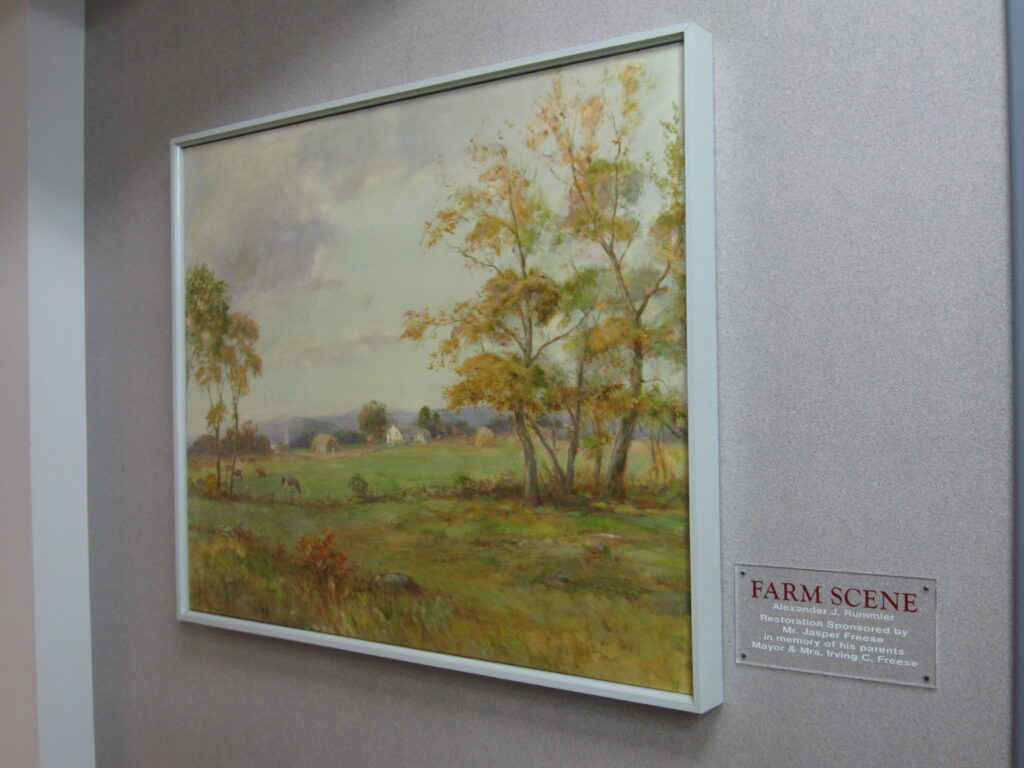
A Living Tribute to Norwalk’s Heritage
Today, these artworks are on public display, woven into the daily life of City Hall. They stand as reminders of Norwalk’s heritage and the generosity of residents who contributed to their restoration, ensuring these treasures endure. The project has garnered national recognition, spotlighting Norwalk’s role in the WPA program. Additional murals from various city buildings, mostly by Rummler, have been added to enrich the collection, showcasing the broader spirit of the community’s commitment to the arts.
Norwalk’s murals offer a glimpse into the past while inviting future generations to appreciate the beauty of a city’s artistic legacy—proof of art’s enduring power to uplift, inspire, and connect communities.
The City Hall Murals Restoration Project has not only revived Norwalk’s WPA legacy but also drawn national attention to the importance of supporting artists. In addition to the murals originally displayed in the high school, 10 additional canvases from other city buildings have been included to enhance the visitor experience, nearly all painted by Alexander Rummler. Some of these works were privately funded by individuals and school PTOs, showcasing a community-driven effort to support the arts.
Back in the WPA era, artists like Rummler were paid 67¢ per hour when he began in 1936, later reaching 97¢ per hour by 1941. Even with this government support, artists had to supplement their income due to the lack of continuous work. Today, artists face similar challenges in trying to sustain themselves through commissioned work, often navigating inconsistent pay and project-based employment. While commissioned art remains a crucial source of income, the struggle for fair compensation and job security continues. Just as in Rummler’s time, artists today are driven by a passion for their craft, persevering through financial challenges to create and share meaningful work.
